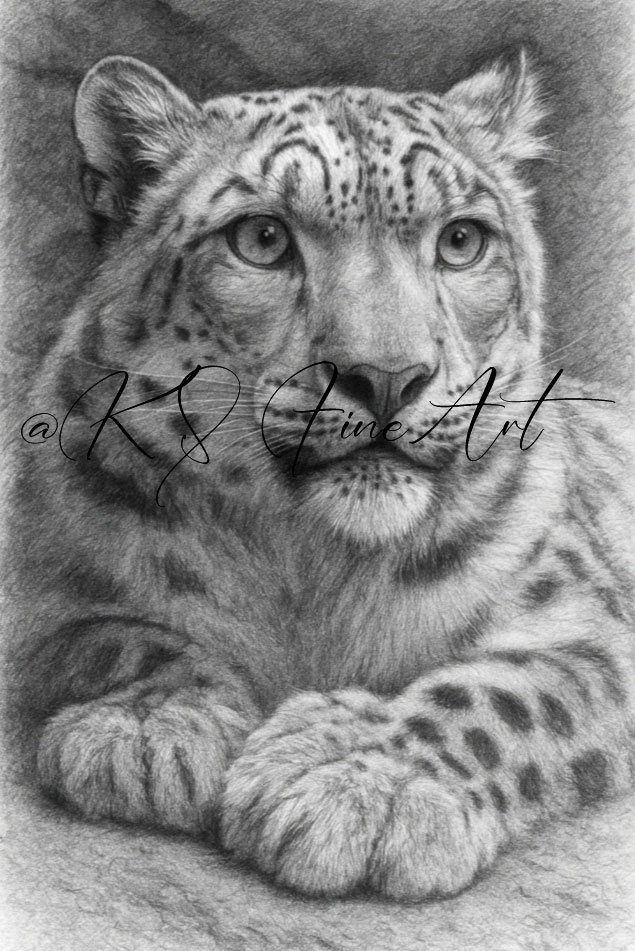Dreamily balancing on branches high up in the Himalayan trees, its reddish fur shimmering in the light – yet it’s barely visible. The red panda is a creature of quiet grace, elusive and reserved, but undeniably beautiful. These peaceful forest dwellers are, however, endangered. In this article, you’ll learn more about this fascinating little bamboo eater—and why it urgently needs our attention.
Red Panda at a Glance
-
Scientific name: Ailurus fulgens
-
Family: Ailuridae (a family of its own)
-
Size: 50–65 cm (body), 30–50 cm (tail)
-
Weight: 3–6 kg
-
Range: Nepal, Bhutan, India, Myanmar, China
-
Habitat: Mountain forests with bamboo understory (1,500–4,000 m elevation)
-
Diet: Mainly bamboo, but also fruits, eggs, and small vertebrates
-
Conservation status: Endangered (IUCN Red List)
Not a Relative of the Giant Panda
Despite its name, the red panda is not closely related to the giant panda. In fact, it belongs to its own unique family — Ailuridae. For a long time, its exact place in zoological classification was debated. Today we know: the red panda is a living fossil and an evolutionary one-of-a-kind.
Lifestyle: Solitary, Crepuscular, Agile
Red pandas are mostly active at dusk and night. During the day, they sleep curled up in tree forks, using their bushy tails as blankets. At night, they become active, skillfully climbing through the branches in search of food. Though classified as carnivores, they rely largely on a plant-based diet — mainly bamboo. Since bamboo is low in nutrients, they spend up to 13 hours a day feeding.
Adaptation Expert with a “False Thumb”
One of their most astonishing adaptations is the “pseudo-thumb” — an extended wrist bone that helps them grip bamboo. Giant pandas also have this clever natural trick, although they aren’t closely related to red pandas — a fascinating example of convergent evolution.
Threats: Fewer Than 10,000 Left in the Wild
The red panda is among the world’s most endangered species. The IUCN estimates only about 2,500 mature individuals remain in the wild. The main threats include:
-
Habitat loss due to deforestation and agriculture
-
Poaching and illegal pet trade
-
Climate change affecting bamboo growth
-
Fragmented populations leading to inbreeding
Conservation Efforts and Hope
In many areas, conservation groups and local communities are now working hand in hand to protect the red panda. Efforts include:
-
Establishing protected areas
-
Environmental education in schools
-
Supporting sustainable farming
-
Research and monitoring programs
-
Captive breeding as a genetic reserve
Why We Should Care
The red panda isn’t just a cute symbol — it plays an important role in its ecosystem. By helping maintain healthy bamboo forests, it supports many other species that depend on this habitat. Losing the red panda would be a quiet loss — one many would only notice when it’s too late.
What You Can Do
-
Support reputable wildlife organizations like the Red Panda Network
-
Raise awareness about the species’ plight
-
Choose sustainable, eco-friendly products to help protect habitats indirectly
-
Share stories, images, and facts about the red panda — awareness is the first step toward conservation
Conclusion: A Small Panda with Great Importance
Though small and unassuming, the red panda carries immense significance — for biodiversity, forest balance, and us humans. By telling its story, we help ensure it doesn’t become a story of loss.
From First Sketch to Finished Artwork
While drawing the red panda, I became deeply aware of how fragile its world is. Here, you can see the step-by-step process — from rough sketch to detailed, finished drawing.
Step 1: The sketch
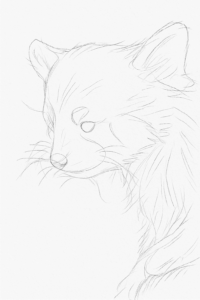
I usually start with a rough sketch to establish the proportions.
Step 2: First details
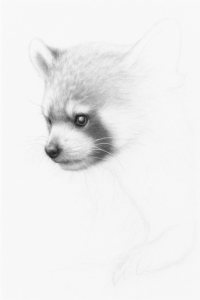
Next, I focus on the eyes and face. That’s the moment when the panda starts to come to life.
Step 3: Texture and Depth
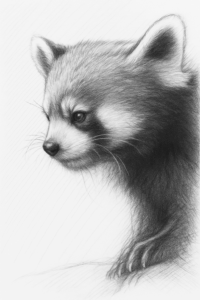
Drawing the fur takes a lot of patience – but it’s worth it to build up those fine hairs layer by layer.
The finished drawing
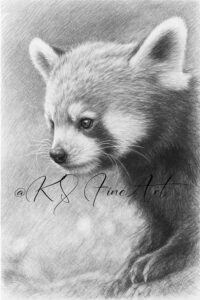
Fun Facts About the Red Panda
The first “panda” was red!
The red panda was first described by scientists in 1823 – a full 48 years before the giant panda. So technically, it’s the original bearer of the name “panda.”
He marks his territory – with urine and feet!
To mark territory, red pandas use not only urine but also scent glands on their paws. By simply walking across branches, they leave invisible scent trails behind.
He cleans himself like a cat!
Red pandas are very clean animals. After waking up, they groom their fur thoroughly – using their front paws to wash their face, head, and body just like a house cat.
Bamboo is his favourite food – but not his only option!
Although red pandas belong to the order of carnivores, over 90% of their diet consists of bamboo. But since they aren’t biologically built for a plant-based diet, they need to eat huge amounts to feel full.
A super tail with many functions!
Their fluffy tail serves multiple purposes: it acts as a blanket to keep warm, a sunshade while sleeping, and a balancing aid when climbing.
Masters of the treetops!
Red pandas are born climbers. Not only can they scale trees with ease – they can even hang upside down from branches, thanks to their strong, curved claws.
They bark and whistle!
Their vocal range includes chirps, whistles, and even a bark-like sound when they feel threatened – a surprisingly diverse soundtrack for such a quiet animal.
Warm feet in the snow!
The soles of their feet are covered in dense fur, keeping them warm even in snow. A handy adaptation for life in cold mountain forests.
Solitary – but communicative!
Red pandas live alone, but they’re far from antisocial. They use vocalizations, scent markings, body language, and even head movements to interact with one another.
They have many names in many languages!
In Nepal, they’re called Habre, in Bhutan Wah donka. In Chinese, they go by xiaoxiongmao (“little bear cat”) or huohu – “fire fox.” Fun fact: the web browser Firefox was actually named after the red panda!
Coming Next: The Mountain Gorilla
In the next blog post, I’ll turn my attention to another fascinating forest dweller – the mountain gorilla. A gentle giant who, like the red panda, urgently needs our protection.
Available as Art Print
My pencil drawing of the red panda is available in the shop – as a poster or FineArt print.
The Red Panda – Fine Art Print 30 x 42 cm oder The Red Panda – Poster print in different sizes


